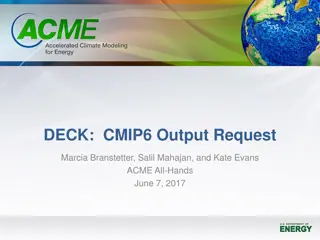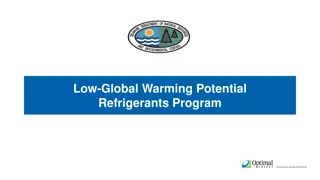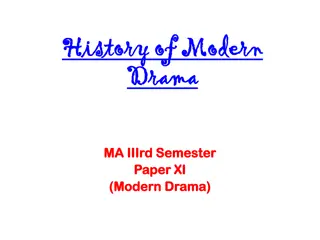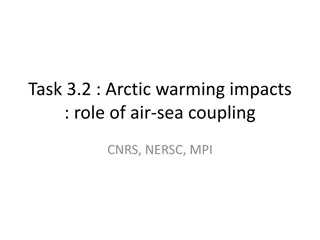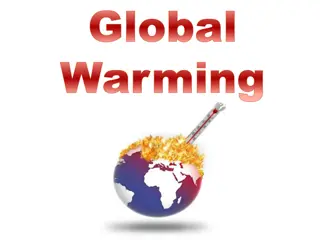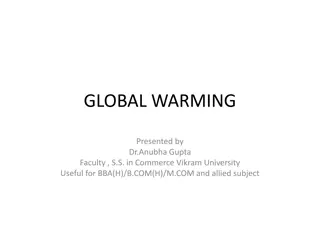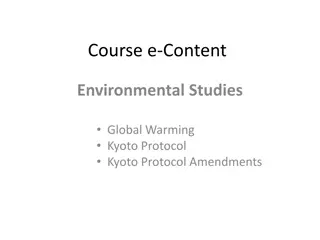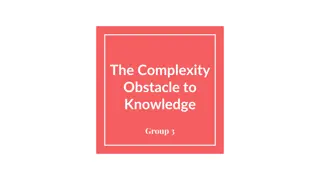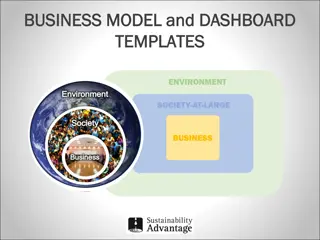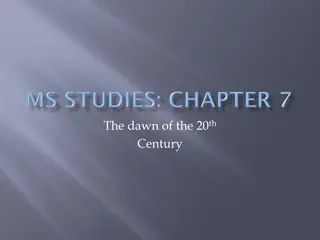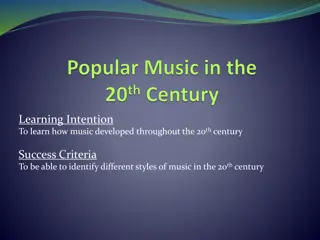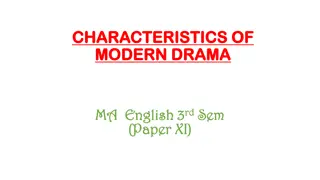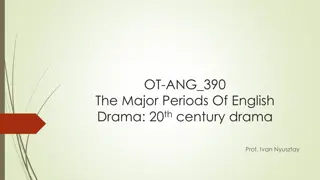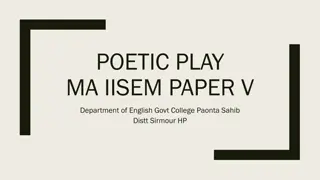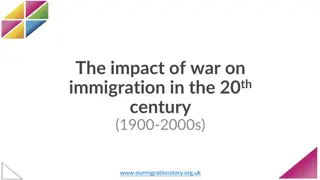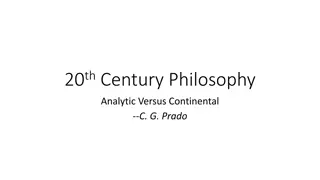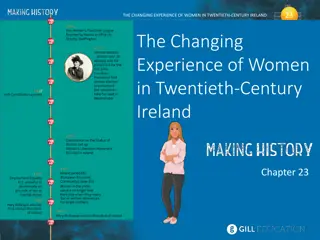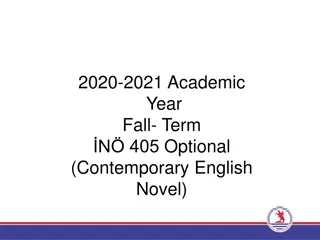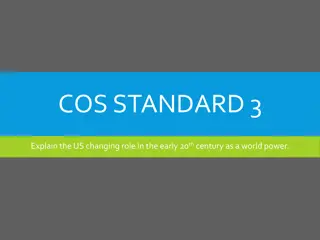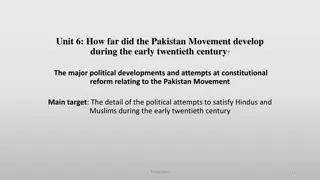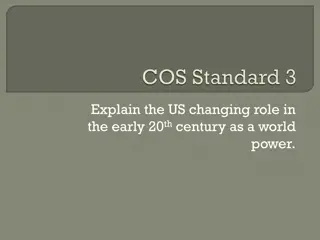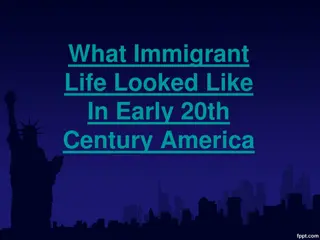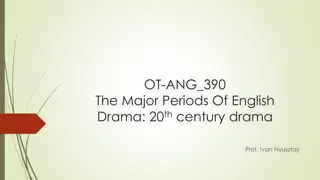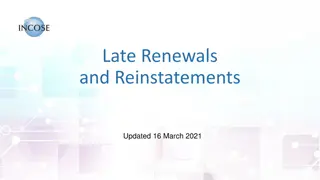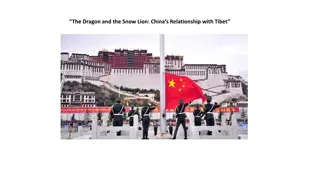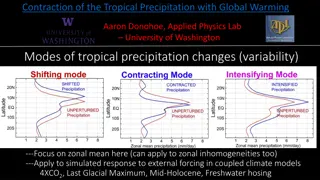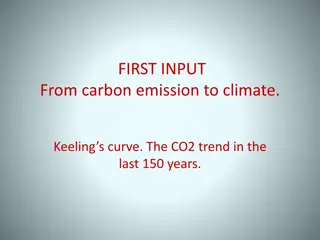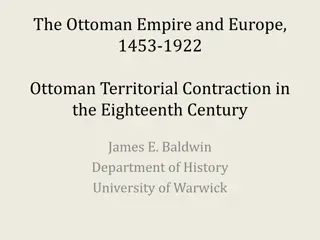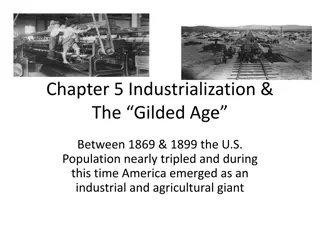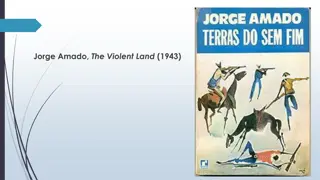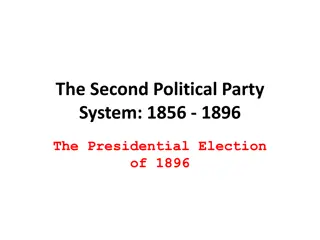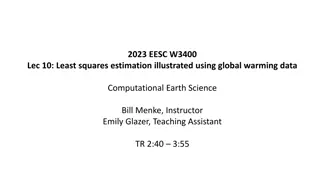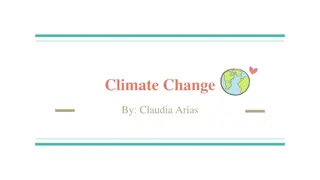Understanding Suppressed Late 20th Century Warming in CMIP6 Models
Recent studies have explored the suppressed late 20th-century warming seen in CMIP6 models compared to CMIP5. The differences in warming patterns are attributed to strong aerosol forcing, with implications for radiative forcing and climate feedbacks. Estimating historical radiative forcing and examining implied effective radiative forcing reveal important insights into the discrepancies between the model outputs. Attribution of forcing and temperature differences further elucidate the impact of climate feedbacks, highlighting the increased sensitivity of CMIP6 models. These findings underscore the complexity of climate modeling and the need for improved understanding of key factors influencing temperature trends.
Download Presentation

Please find below an Image/Link to download the presentation.
The content on the website is provided AS IS for your information and personal use only. It may not be sold, licensed, or shared on other websites without obtaining consent from the author. Download presentation by click this link. If you encounter any issues during the download, it is possible that the publisher has removed the file from their server.
E N D
Presentation Transcript
Radiative forcing and climate feedbacks explain the cause of the suppressed late 20thcentury warming in CMIP6 models Chris Smith1,2, Piers Forster1, Hege-Beate Fredriksen3 1. Priestley International Centre for Climate, University of Leeds, UK 2. International Institute for Applied Systems Analysis, Laxenburg, Austria 3. Department of Physics and Technology, UiT the Arctic University of Norway, Troms , Norway c.j.smith1@leeds.ac.uk @chrisroadmap Based on a paper in Geophysical Research Letters https://doi.org/10.1029/2021GL094948
Suppressed late-20th century warming CMIP6 models show less warming than CMIP5 models from around 1950, with the differences most pronounced around 1960-2000. Whereas CMIP5 models are doing a good job of tracking the observed warming, CMIP6 models as a group are too cool. Several studies (Flynn & Mauritsen 2020; Dittus et al. 2020; Andrews et al. 2020; Gillett et al. 2021) have hypothesised that the aerosol forcing in this period is too strong. 24 May 2022 2 Radiative forcing and climate feedbacks
Estimating historical radiative forcing The gold standard is to use fixed-SST boundary conditions and varying atmospheric forcings to derive ERF. From CMIP6 this is in RFMIP, but only available in 8 models (and none in CMIP5). 1-lambda 3-lambda To include more models we use the method from Forster et al. (2013) to estimate implied effective radiative forcing F: Slope of Gregory regression in 150-year 4xCO2 experiment ? = ? ? ? Transient historical temperature anomaly T [K] Transient historical TOA energy imbalance Fredriksen et al., in preparation This 1-lambda model is an approximation because climate sensitivity is not constant and using it may bias estimates of ?. As an improvement, we can use a 3-lambda model (Fredriksen et al. 2021) 24 May 2022 3 Radiative forcing and climate feedbacks
3-lambda implied typically outperforms 1-lambda compared to RFMIP fixed-SST forcing 24 May 2022 4 Radiative forcing and climate feedbacks
Implied ERF is weaker in CMIP6 than in CMIP5 24 May 2022 5 Radiative forcing and climate feedbacks
Attribution of forcing and temperature differences using DAMIP experiments GHG forcing: CMIP6 is slightly cooler than CMIP5 after 1950, but difference in implied ERF is larger Other anthropogenic forcing (mainly aerosol): CMIP6 is marginally cooler than CMIP5, with similar implied ERF Overall, differences in forcing between CMIP5 and CMIP6 are affected by the differences in climate feedbacks: CMIP6 models as a group are more sensitive (higher ECS) 24 May 2022 6 Radiative forcing and climate feedbacks
Summary CMIP6 models are systematically cooler than CMIP5 models over the 1960-2000 period Differences in aerosol forcing are small, but differences in greenhouse gas forcing are larger, and is amplified by how these forcings translate to warming through differing climate feedback strengths in CMIP5 and CMIP6. Using a 3-lambda model for estimating implied ERF provides estimates that are closer to RFMIP in most models In future, we also call for more models running historical fixed-SST experiments as part of RFMIP. 24 May 2022 7 Radiative forcing and climate feedbacks



